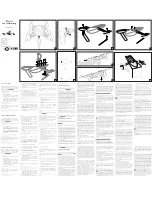
70
©
2022 DJI All Rights Reserved.
Flight
Once pre-flight preparation is complete, it is recommended to hone your flight skills and
practice flying safely. Make sure that all flights are carried out in an open area. Refer to the
Remote Controller and DJI Fly sections for information about using the remote controller and
the app to control the aircraft.
Flight Environment Requirements
1. DO NOT use the aircraft in severe weather conditions including wind speeds exceeding 12 m/s,
snow, rain, and fog.
2. Only fly in open areas. Tall structures and large metal structures may affect the accuracy of
the onboard compass and GNSS system. It is recommended to keep the aircraft at least 5 m
away from structures.
3. Avoid obstacles, crowds, high voltage power lines, trees, and bodies of water. It is
recommended to keep the aircraft at least 3 m above water.
4. Minimize interference by avoiding areas with high levels of electromagnetism such as
locations near power lines, base stations, electrical substations, and broadcasting towers.
5. Aircraft and battery performance is subject to environmental factors such as air density
and temperature. Be careful when flying 6,000 m or more above sea level, since battery and
aircraft performance may be reduced.
6. Aircraft cannot use GNSS within the polar regions. Use the Downward Vision System when
flying in such locations.
7. DO NOT take off from moving objects such as cars, ships, and airplanes.
8. DO NOT use the aircraft, remote controller, battery, and battery charger near accidents,
fires, explosions, floods, tsunamis, avalanches, landslides, earthquakes, dust, or sandstorms.
9. Use the battery charger in a temperature range of 5° to 40° C (41° to 104° F).
10. Operate the aircraft, battery, remote controller, and battery charger in a dry environment.
11. DO NOT use the battery charger in humid environments.
Operating the Aircraft Responsibly
To avoid serious injury and property damage, observe the following rules:
1. Make sure you are NOT under the influence of anesthesia, alcohol, or drugs or suffering
from dizziness, fatigue, nausea, or other conditions that could impair the ability to operate
the aircraft safely.
2. When landing, power off the aircraft first, then switch off the remote controller.
3. DO NOT drop, launch, fire, or otherwise project any dangerous payloads on or at any
buildings, persons, or animals, which could cause personal injury or property damage.
4. DO NOT use an aircraft that has been crashed or accidentally damaged or an aircraft that is
not in good condition.
5. Make sure to train sufficiently and have contingency plans for emergencies or when an
incident occurs.








































